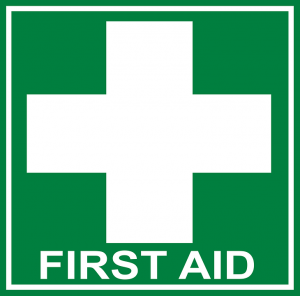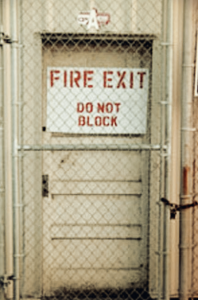5 Rules of Workplace Safety Management
There are certain rules of human behavior that must be considered when developing a process of safety management. If you violate these rules, you will fail in your objective to develop a safer workplace. The rules themselves are simple, however, don’t be deceived because they have a great influence on human behavior.
Rules of Workplace Safety Managemet
- Repetition: To get your message across it is necessary to use repetition. Repetition will ensure that your safety message is at the top of every employees’ consciousness. Safety management is a process not an event. One of the ways to create this consciousness about safety is to hold five-minute safety briefings at the beginning of each shift. This is very similar to a game plan which is discussed before a sports team takes the field. If you make the safety briefings relevant, interesting and valuable, you will find that staff members will contribute readily.
- Consistency: The concept of consistency applies to many situations and has a profound effect on human behavior. We trust people who are consistent, we believe their message, in turn we will tend to be more trustworthy and consistent. Consistency is demonstrated. For example, if, at a safety briefing you mention that there will be no blame should an accident occur, the statement must be backed up by your behavior and the behavior of others in the event of an accident.
Check Out: How to Improve Your Safety Culture
- Involvement: Involvement is the key to safety management. To gain control, you must give control. The people who are ideally situated to develop safe working practices are the people doing the job. This contrasts with the normal prescriptive safety management process where somebody, somewhere creates rules and regulations without the experience of doing the job. Every single person on any work site should be able to contribute to safe working practices. If you avoid this basic principle, you will find that the imposed “safe working practices” will be ignored.
- Positive reinforcement: The number one tool in safety management is positive reinforcement. If you are serious about creating a safer workplace, make sure that you recognize safe behavior. Every day go on a mission to find people who are working safely and tell them that you have noticed what they are doing. This is harder than it sounds. Try it and find out for yourself. But remember, the results are well worth the effort. Catch your people doing it safely and they will continue to do it safely.
- Common sense: It has been said that sense is not that common. This is relevant when considering workplace safety management. If the safety rules and regulations don’t pass the common sense of the people at risk, they will not comply. That’s why the involvement of the staff in safety management is so important.
10 Tips to Improve a Safety Management System
If you are looking to take your system to the next level, the following ten things will help you improve your safety management system and will help you with your journey:
- Defining safety roles and responsibilities for all levels of the organization. For example, ensuring that safety is a line management function and not part of the safety professional’s role.
- Developing upstream measures. Stop focusing on OSHA’s Total Case Incident Rate (TCIR) as a measurement. For example, document and track the number of reports of hazards/suggestions, number of committee projects/successes, number of related specific activities, etc.
- Ensure that management and supervisors are aligned with the vision, by establishing a shared-vision of safety goals and objectives vs. production, quality, etc.
- Implementing a process that holds managers and supervisors accountable for visibly being involved where they will set the proper example and leading a positive change for safety.
- Evaluating and rebuilding any incentives and disciplinary systems for safety, as necessary. For example, not basing the incentives and disciplinary system on the number of recordable injuries. Instead focus on specific activities that have been performed.
- Ensuring that all safety committees understand their roles and responsibilities, have a defined charter, and are functioning properly. For example all employees should know how to become a member of a committee, understand their responsibilities/functions, and authority.
- Providing multiple paths for employees to make suggestions, concerns, or problems. One such mechanism should use the chain of command and ensure that there are no repercussions against employees. The key is to track suggestions, concerns, and/or problems and hold supervisors and middle managers accountable for being responsive to all employee concerns.
- Developing a system that tracks and ensures that there is timely hazard correction. Many sites have been successful in building this in with an already existing work order system.
- Ensuring that there are methods for reporting injuries. Educate employees on the importance of reporting minor injuries and loss producing events. For example, first aid cases and any near misses.
- Evaluating and rebuilding the injury investigation system as necessary to ensure that investigations are conducted on a timely basis, complete, and effective. Ensure that each injury has an identified root cause. Avoid blaming employee for injuries. Take a look at the management system as a whole to see if there was a failure in the system.
As stated, if you are looking to take your safety management system to the next level, the listed ten items will help you with the needed improvement along your with your journey.



















